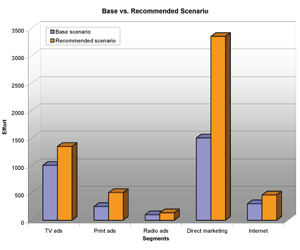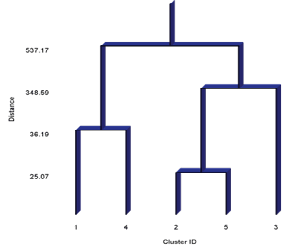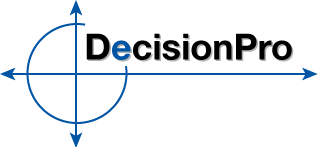| What you put in... |
What you get out... |
- Number of market segments, products, geographies or other basis for resource allocation
- Current level of spending and associated sales
- Profit margins
- Response functions - how sales would change if spending were higher or lower than current spending
- Constraints (minimum / maximum) for each basis unit
|
- Optimal level of total spending
- Optimal allocation of spending across units
- Profit associated with optimal plan versus current plan
- Incremental gain or loss associated with changes from current or optimal plan
|
 Resource Allocation helps optimize resource sizing and resource allocations across segments, products, channels, etc. It answers such questions as
Resource Allocation helps optimize resource sizing and resource allocations across segments, products, channels, etc. It answers such questions as
- How much should we spend in total during a given planning horizon?
- How should that spending get allocated to each product or market segment? To each marketing mix element? How much of our budget should be spent on advertising and other forms of impersonal marketing communications? On sales promotions? On the sales force?
- How should budgets given to an individual (e.g., salesperson, manager of department) be allocated? To customers? To geographies? To sub-elements of the marketing communications mix? Over time?
There are four primary steps:
- Enter data for current efforts and outcomes-- typically these are hard data about current market situations.
- Enter calibration data--typically these are judgmental data, unless there are data available from experimentation.
- Calibrate the response curves. Check to ensure that the curves fit the points.
- Run the analysis (and optionally enter constraints).
 Segmentation/Targeting is an analytic technique that helps firms to segment customers in a market.
Segmentation/Targeting is an analytic technique that helps firms to segment customers in a market.
 Resource Allocation helps optimize resource sizing and resource allocations across segments, products, channels, etc. It answers such questions as
Resource Allocation helps optimize resource sizing and resource allocations across segments, products, channels, etc. It answers such questions as